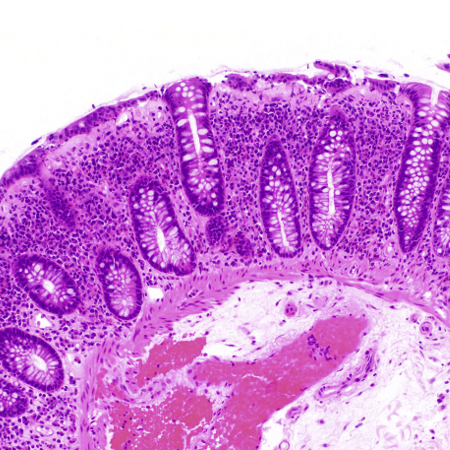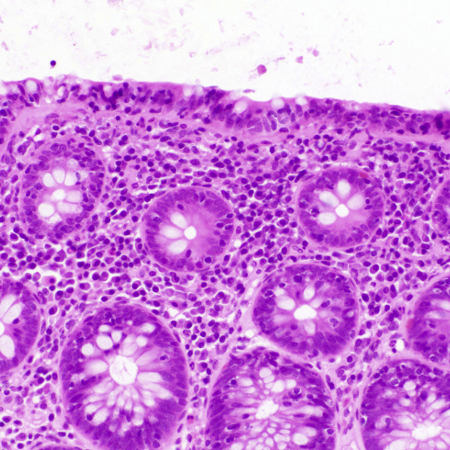Criteria
Histologic criteria[6]
Diagnosis is confirmed by the presence of the following characteristic pathohistologic findings, which identify three histologic subtypes of microscopic colitis:[6]
Collagenous colitis: characterized by a thickened subepithelial collagenous band of ≥10 micrometers (normal <5 micrometers) combined with an increased inflammatory infiltrate in the lamina propria.
[Figure caption and citation for the preceding image starts]: Biopsy demonstrating collagenous colitis with a thickened subepithelial collagen bandTome J et al. Microscopic Colitis: A Concise Review for Clinicians. Mayo Clin Proc. 2021 May;96(5):1302-8; used with permission [Citation ends].

Lymphocytic colitis: characterized by an increased number of intraepithelial lymphocytes of ≥20 per 100 surface epithelial cells (normal <5 micrometers) combined with an increased inflammatory infiltrate in the lamina propria. The collagenous band is not significantly thickened (<10 micrometers).
[Figure caption and citation for the preceding image starts]: Biopsy demonstrating lymphocytic colitis with intraepithelial lymphocytosis.Tome J et al. Microscopic Colitis: A Concise Review for Clinicians. Mayo Clin Proc. 2021 May;96(5):1302-8; used with permission [Citation ends].

Microscopic colitis incomplete (also known as microscopic colitis not otherwise specified): comprises incomplete collagenous colitis (defined by a thickened subepithelial collagenous band of >5 micrometers but <10 micrometers) and incomplete lymphocytic colitis (defined by >10 but <20 intraepithelial lymphocytes per 100 epithelial cells and a normal collagenous band). Both types show a mild inflammatory infiltrate in the lamina propria.
Use of this content is subject to our disclaimer